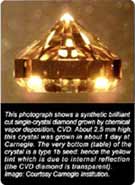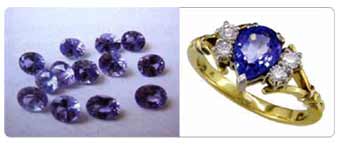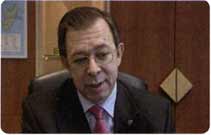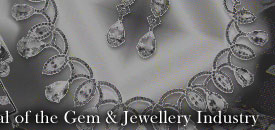 |
| A group headed by scientists at the Carnegie Institution's Geophysical Laboratory in Washington, D.C., has produced gem-sized diamonds that are harder than any other crystals. Further, the researchers grew these diamonds directly from a gas mixture at a rate that is up to 100 times faster than other methods used to date.
The researchers grew the crystals using a special high growth rate chemical vapor deposition (CVD) process that they developed. They then subjected the crystals to high- pressure, high-temperature treatment to further harden the material. In the CVD process, hydrogen gas and methane are bombarded with charged particles, or plasma, in a chamber. The plasma prompts a complex chemical reaction that results in a "carbon rain" that falls on a seed crystal in the chamber. Once on the seed, the carbon atoms arrange themselves in the same crystalline structure as the seed. In this case, the seed was a type 1b synthetic diamond plate. They have grown single crystals of diamonds up to 10 millimeters across and up to 4.5 millimeters in thickness by this method.
|
 |
|
The researchers then subjected the tough CVD crystals to high-temperature and high-pressure conditions. The diamonds were heated to 2000° C and put under pressure between 50,000 and 70,000 times atmospheric pressure (5-7 GPa) for ten minutes. This final process resulted in the ultrahard material, which was at least 50% harder than the conventional diamonds as shown by direct measurements carried out in collaboration with scientists at Los Alamos National Laboratory.
"Making diamonds has not been the primary goal of our research, "remarked Russell Hemley of Carnegie. "Our group is interested in the behavior of materials at extreme pressures and temperatures. We need large, perfect diamond crystals to create new classes of high-pressure devices for our research and decided to explore whether we could make these crystals by CVD processes. We found that we could, and at a very high growth rate. This has opened up an entirely new way of producing next generation diamond-based electronics devices and cutting tools. Our new finding that the diamonds can be supertough and/or superhard was a surprise and will greatly benefit many of these applications." |
| |
 |
Tanzanite, The rare gemstones that have became a popular feature in the jewellery markets of several countries, has from a laboratory manufactured, synthetic tanzanite. The growing demand and increased appreciation of tanzanite has contributed to a 30 percent year-on-year price increase, and it is this higher monetary value that synthetic tanzanite dealers are hoping to cash in on.
|
 |
|
But industry experts at the Tanzanite Foundation (TF) warn that sales of synthetic tanzanite will destroy consumer confidence and could erode the real tanzanite market. elena Ronca, Marketing Manager at the Tanzanite Foundation said: "Manufacturing synthetic tanzanite , is not necessarily negative in itself. People, who knowingly buy synthetic tanzanite, do so out of choice. The problem arises when corrupt dealers sell synthetic tanzanite as real tanzanite, for real tanzanite prices. Clearly this will have a very negative impact on the tanzanite market, undermining consumer confidence in the process." |
|
| |
 |
|
Mark Van Bockstael, HRD director of international affairs and trade, has been appointed as the Belgian diamond sectors's Chief Compliance Officer to implement an amended money laundering law in the industry. "The law is very specific regarding what it requires from the various sectors to which it is applicable, but it still needs to be related to the conditions in the diamond sector, " explained Van Bockstael.
|
 |
|
"Right now, we want to fill in those gaps for both the diamond community and the government, in as efficient and straightforward a manner as possible. " The new legislation is an amendment to a law first passed in 1993, which aimed to protect Belgium's financial sector from being exploited for the purpose of money laundering. The original law had named 19 different types of businesses that qualified as financial institutions. the latest amendment adds three more business sectors, including registered diamond traders.
Mr. Mark Van Bockstael
|
|
| |
|
|
|





